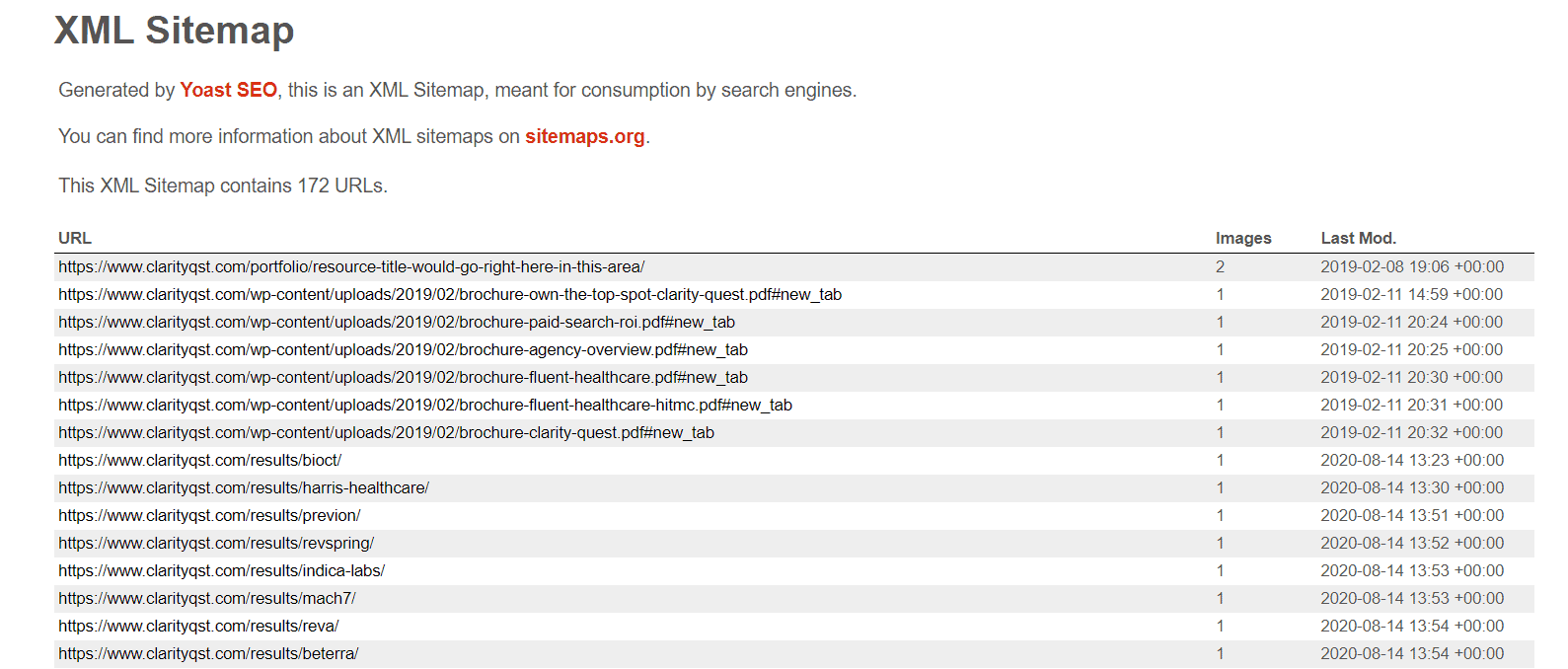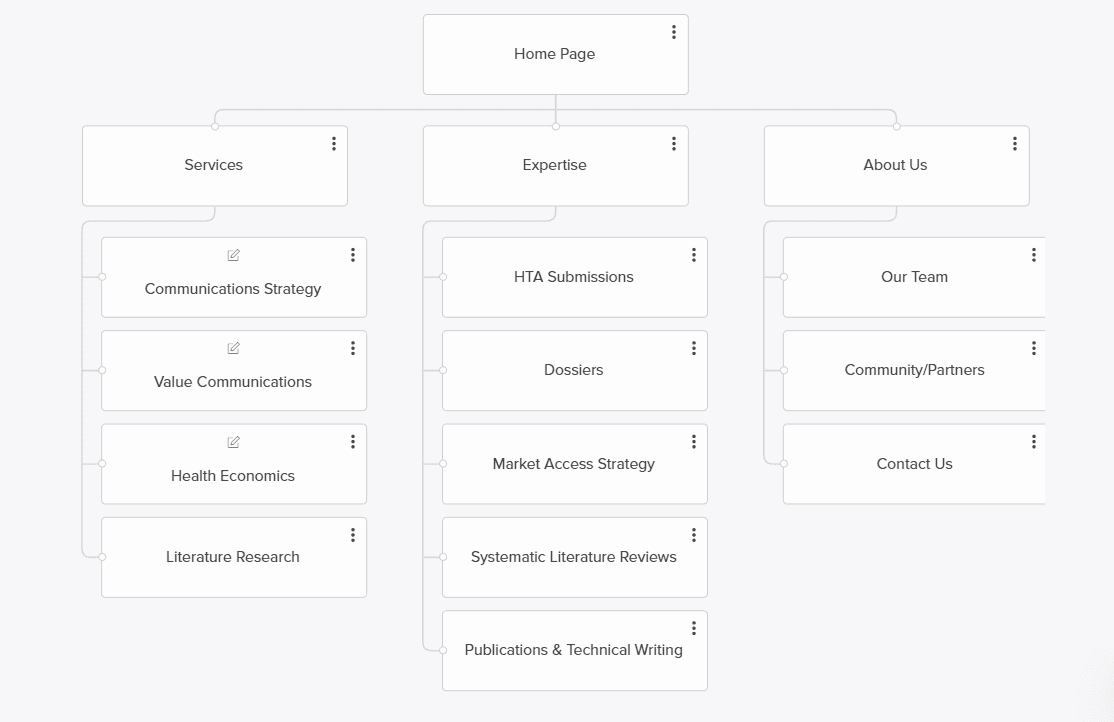When developing an HTML and XML sitemap, life sciences, biotech, and healthcare IT digital marketers must serve two masters.
A well-designed sitemap ensures that search engines AND users can navigate your website effectively. If it lacks a coherent structure, all the beautiful design elements, engaging copy, colorful images, and informative videos in the world won’t keep it from turning off your visitors or confusing web crawlers.
A sitemap acts as a blueprint, providing a hierarchical structure and organizing the content of your website. It aids in search engine optimization (SEO) and enhances user experience by simplifying navigation. If your navigation isn’t intuitive, you risk poor SERP rankings and, perhaps worse, experiencing a blow to your reputation.
In another blog post, we took an architecture focus by sharing our 9 best practices for crafting the perfect sitemap. Here, we will explore the nuts and bolts of development on the XML and HTML sides, respectively.
HTML and XML sitemap purpose and 4 best practices
Before diving into the development process, it’s essential to grasp why you’re creating this structure in the first place.
While search engines rely on sitemaps to discover and index your web pages efficiently, sitemaps also serve as a roadmap for users. A well-structured sitemap can quickly guide visitors to relevant content, improving their experience and increasing engagement. By understanding the dual purpose of a sitemap, you can design it to cater to search engines and users effectively.
1. Prioritize simplicity and clarity
When it comes to sitemap design, simplicity is vital. Aim for a clear and intuitive structure that allows users and search engines to understand your website’s organization effortlessly.
Avoid overwhelming users with an excessive number of levels or complex hierarchies. Instead, focus on creating a logical flow that reflects your site’s information architecture. Use concise and descriptive labels for each page or section to provide clarity.
If your website has an extensive range of pages, consider using multiple sitemaps or implementing a hierarchical approach to avoid overcrowding.
2. Follow XML sitemap standards
XML (eXtensible Markup Language) is the preferred format for sitemaps, as most search engines recognize it. Adhering to the XML sitemap standards ensures compatibility and ease of use across various platforms.
Include necessary elements such as <url>, <loc>, <lastmod>, and <changefreq> to provide search engines with valuable information about your web pages. Make sure your XML sitemap is accessible to search engine bots by placing it in the root directory of your website and referencing it in your robots.txt file.
3. Utilize HTML sitemaps for user navigation
While XML sitemaps primarily cater to search engines, HTML sitemaps are designed for users. HTML sitemaps visually represent your website’s structure, featuring links to all important pages.
Link a well-designed HTML sitemap in your website’s footer or navigation menu. This allows users to easily find and access specific pages, especially when the website’s navigation menu is complex. Ensure the HTML sitemap is mobile-friendly and reflects any updates or changes made to the XML sitemap.
4. Keep your sitemap updated
A sitemap is not a static component of your website. As you add or remove pages, update content, or change the site’s structure, keeping your sitemap up to date is crucial.
Regularly review and update your XML and HTML sitemaps to reflect the latest changes. This ensures that search engines can accurately index your web pages and users can access the most relevant content. Consider using automated tools or content management systems that dynamize and update your sitemaps to minimize manual effort.
Create your ‘map’ to web success today
Developing an effective sitemap is critical to website optimization and user experience. By understanding the purpose of your sitemap, prioritizing simplicity and clarity, following XML sitemap standards, utilizing HTML sitemaps, and keeping your sitemap updated, you can create a robust and user-friendly navigation system.
A well-designed sitemap helps search engines discover and index your web pages efficiently and empowers users to navigate your website effortlessly. Remember, your sitemap should evolve alongside your website, so make it a habit to review and update it regularly. By implementing these best practices, you can ensure that your sitemap becomes a valuable tool in enhancing the visibility and usability of your website. Related: if you’d like to see examples of excellent B2B websites, check out this HubSpot list.
Partner with a B2B healthcare marketing agency with top-level project management skills and subject matter expertise in healthcare IT and biotech. We specialize in soup-to-nuts sitemap creation and are masters of growing online footprints.
Contact us today to get started.




